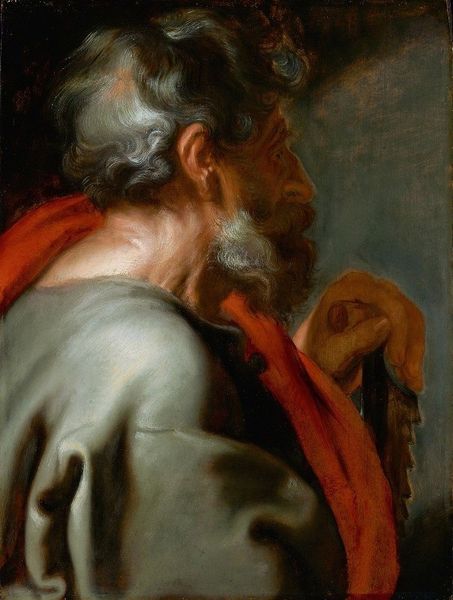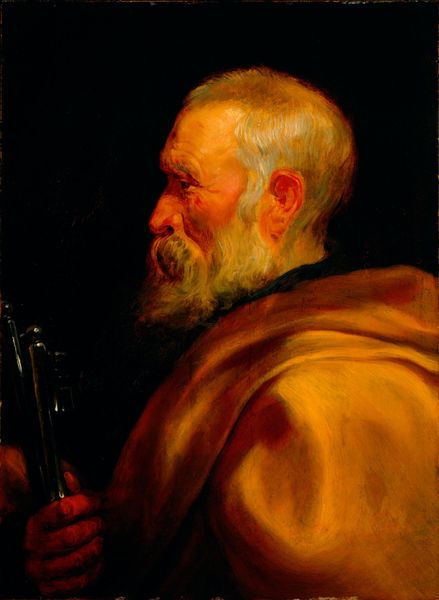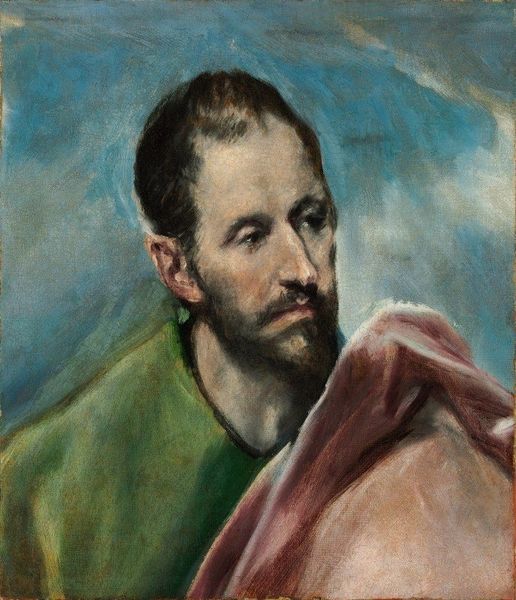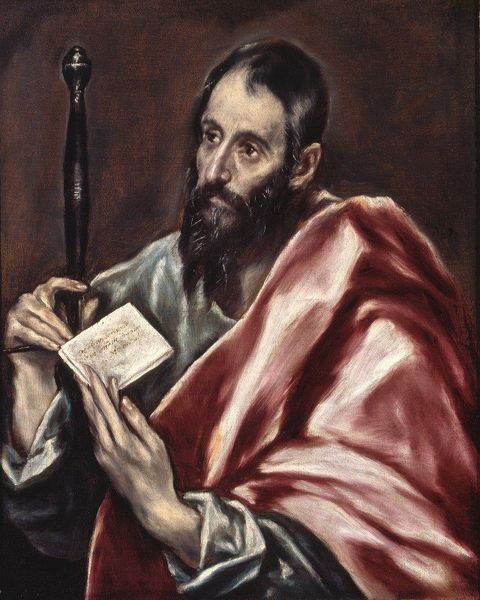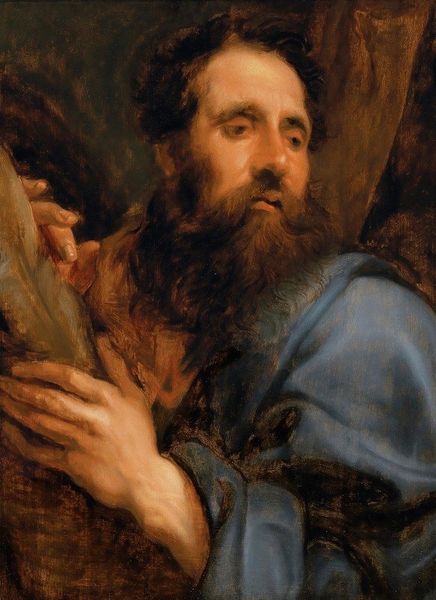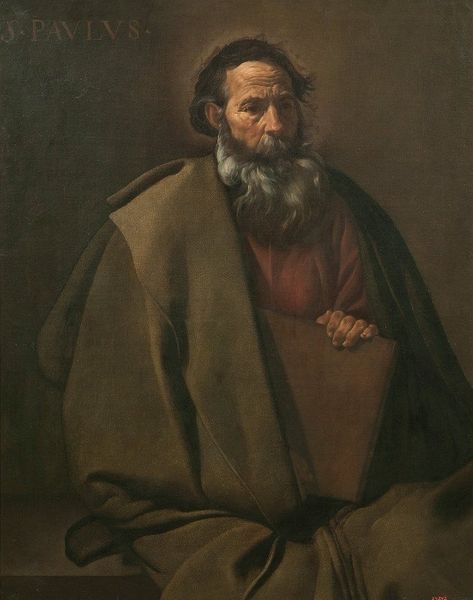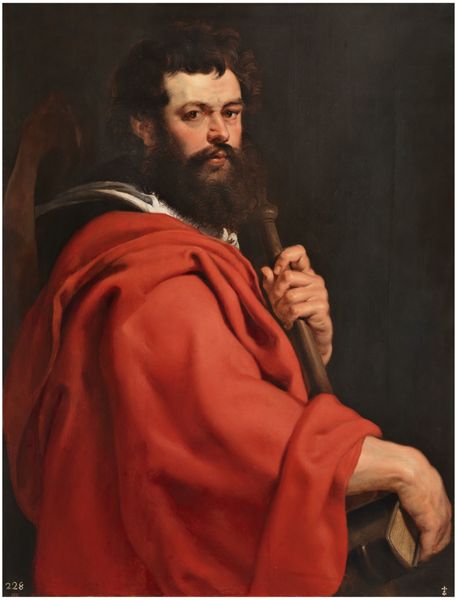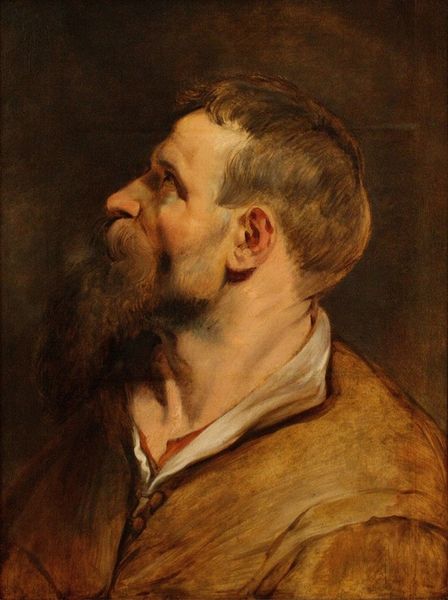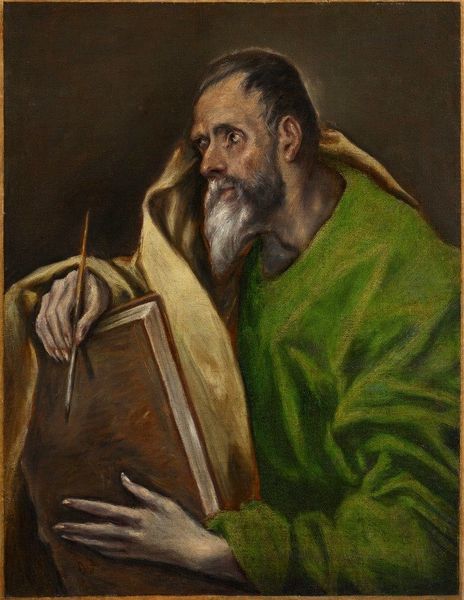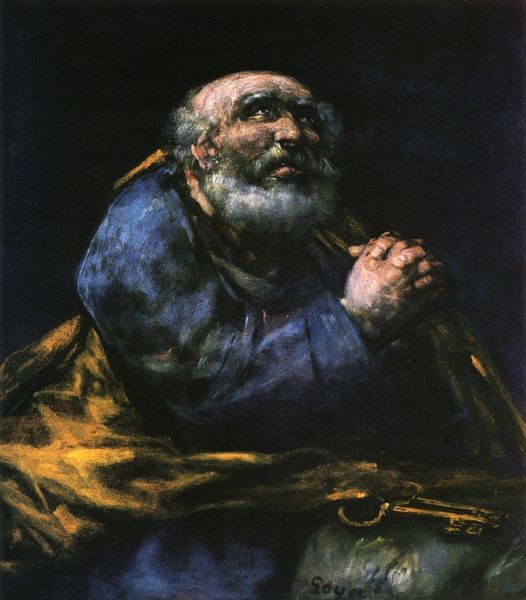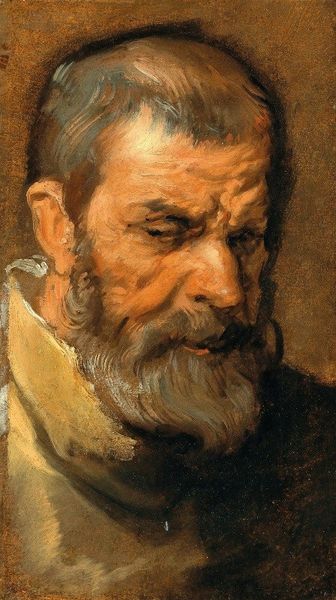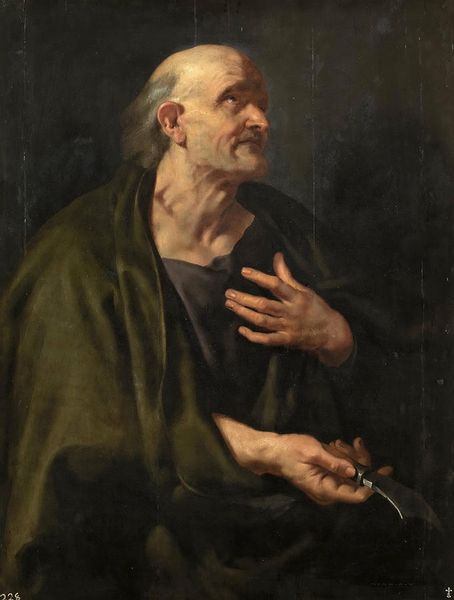
painting, oil-paint
#
portrait
#
baroque
#
portrait
#
painting
#
oil-paint
#
figuration
#
history-painting
Copyright: Public Domain: Artvee
Anthony van Dyck rendered Saint Matthias in oil paint, a medium which had become highly refined by the 17th century. Oil allowed for incredible subtlety in modeling the human form, evident in the delicate rendering of the saint’s skin, beard and hands. Look closely, and you’ll notice how thin the paint has been applied in certain areas – almost like a glaze – allowing light to reflect from underneath. In other spots, it is built up with thicker brushstrokes, creating a tangible surface. Van Dyck's confident handling of the material is obvious, and this very skill, born of years of apprenticeship and workshop practice, was his stock-in-trade. Like any artist of his era, he was deeply reliant on the labor of others to prepare his materials. Pigments were sourced from far and wide, ground and mixed into paint by studio assistants. Considering the social conditions of its making, and how craft and fine art practices intersect, enriches our understanding of Saint Matthias, and indeed all works of art.
Comments
No comments
Be the first to comment and join the conversation on the ultimate creative platform.
